Claude Cormier, landscape architect behind rainbow balls in Montreal's Village, dies at 63
Claude Cormier, Quebec's most renowned landscape architect whose projects have revitalized public spaces across North America, has died.
He was 63.
In Montreal, the award-winning architect was famously known for coating The Village in a beautiful rainbow display created by thousands of coloured balls. He designed the decorative balls — later dubbed 18 Shades of Gay — which were suspended over a 1-kilometre stretch of Ste-Catherine Street. They were meant to be installed for just one summer, but ended up staying there for seven years.
A spokesperson for the architecture firm he founded, CCxA, confirmed in a statement that Cormier died at his home in Montreal on Friday due to complications from Li-Fraumeni syndrome, a rare genetic condition that is associated with a heightened risk of developing several types of cancer.
In Montreal, his work can be seen in the zig-zag paths that cross through Place d'Youville in Old Montreal, Clock Tower Beach with its signature blue umbrellas on the city's waterfront, the 52 pink concrete trees that make up the Lipstick Forest, and the sliced-in-half water fountain that he designed in the rejuvenated Dorchester Square.
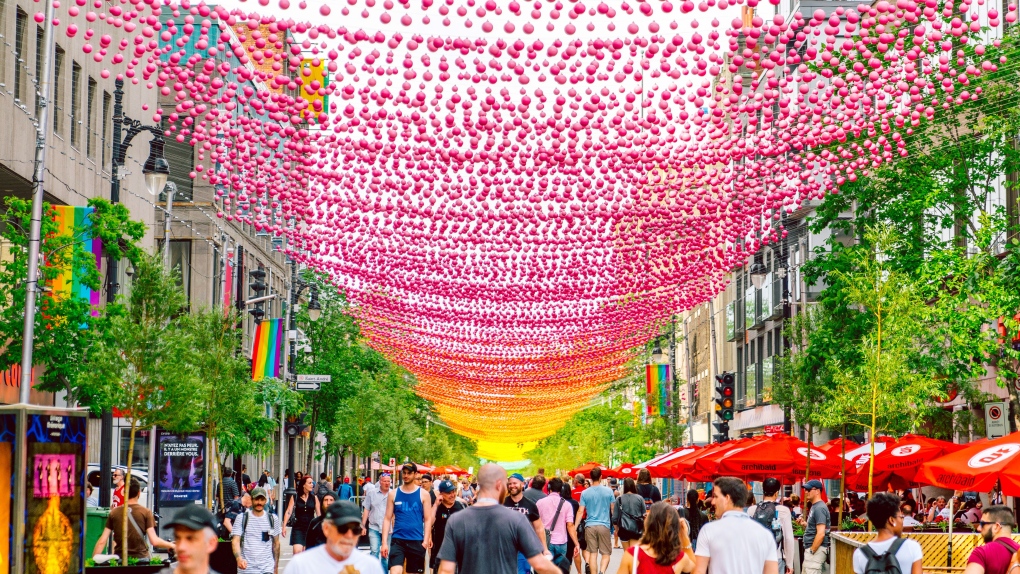 18 Shades of Gay, designed by Claude Cormier, adorns Ste-Catherine Street in Montreal. (Source: Jean-Michael Seminaro)
18 Shades of Gay, designed by Claude Cormier, adorns Ste-Catherine Street in Montreal. (Source: Jean-Michael Seminaro)
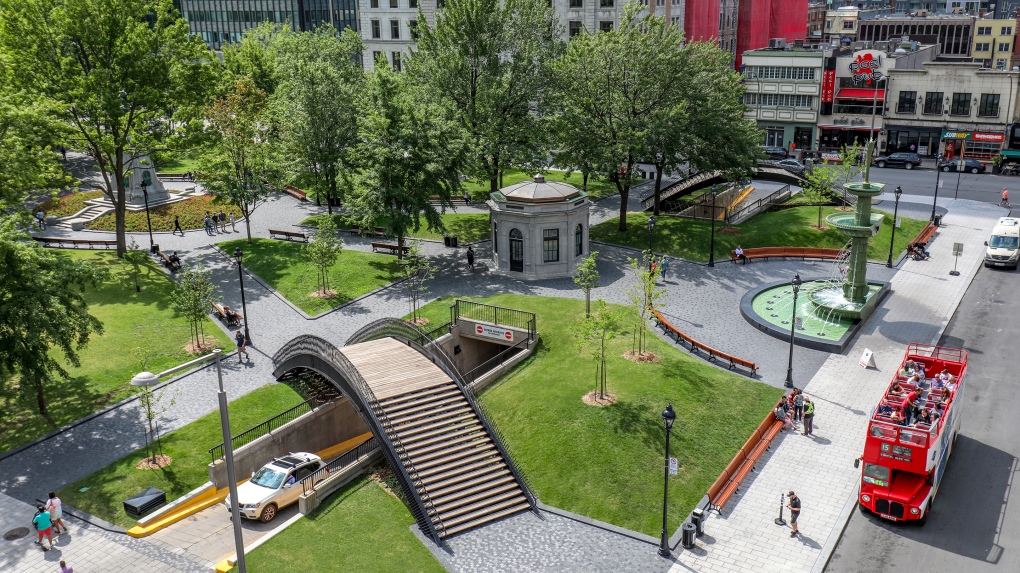 Dorchester Square in Montreal. (Source: JF Savaria)
Dorchester Square in Montreal. (Source: JF Savaria)
"Cormier’s joyful and subversive designs blended conceptual clarity with a studied instinct for making enduring places. His ability to design public spaces with broad public appeal stemmed from multiple qualities: audacity, sincerity, discipline, leadership, business acumen, a talent for creative problem solving, and an ability to bring light and laughter to everyone — and every situation — he encountered," reads an obituary published Friday.
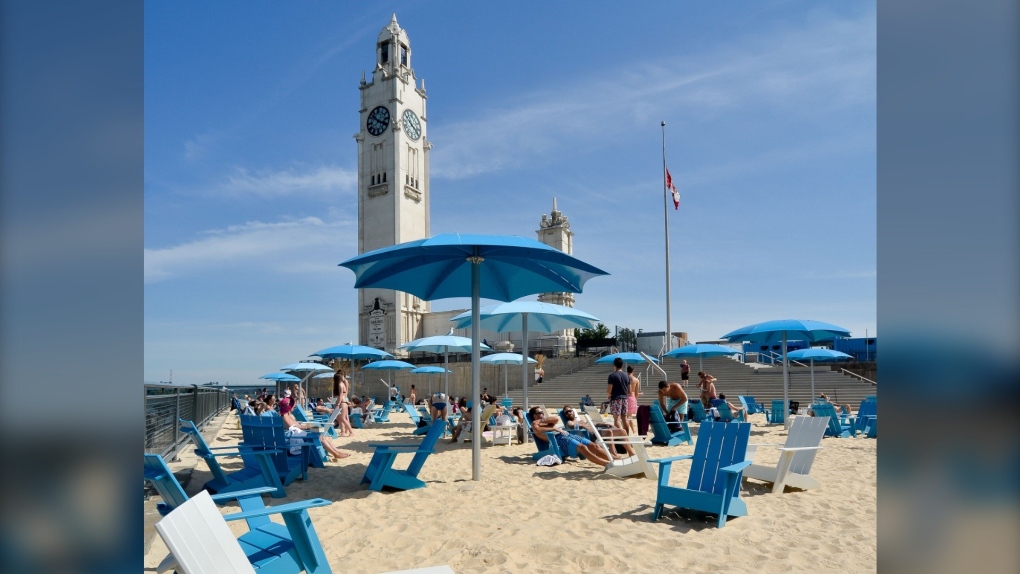 Clocktower Beach in Montreal. (Source: CCxA)
Clocktower Beach in Montreal. (Source: CCxA)
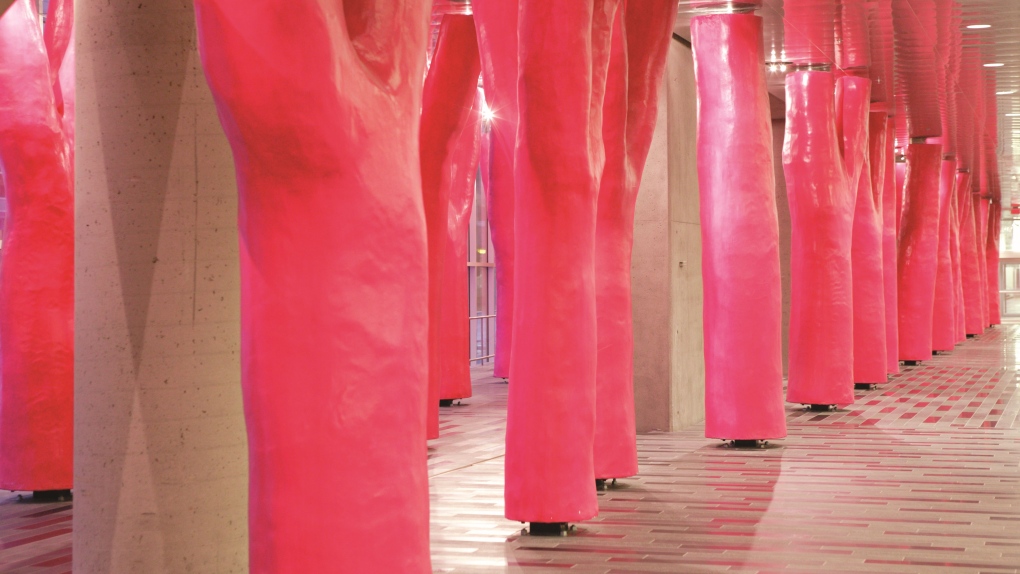 Lipstick Forest in Montreal. (Source: Jean-Francois Vezina)
Lipstick Forest in Montreal. (Source: Jean-Francois Vezina)
Cormier, who studied history and theory of design at Harvard University, also was the brainchild of projects in Toronto, such as Sugar Beach and the city's Berczy Park — a project he faced criticism from bureaucrats for by incorporating life-sized bronze dog statues into the space.
 Berczy Park in Toronto. (Source: Industryous Photography)
Berczy Park in Toronto. (Source: Industryous Photography)
He has also been described as an "ambassador for queer issues" through his work.
"Whether conveyed through the pink columns of Lipstick Forest (2002), Sugar Beach’s signature pink umbrellas near the base of Toronto’s Gay Village, or the rainbow balls of Cormier’s brilliant Pink Balls (2011-2016) and 18 Shades of Gay (2017-2019) installations that hung over Montreal's Sainte-Catherine Street East every summer for nearly a decade, the expression of queer joy was an important dimension of Cormier’s design identity," the obituary reads.
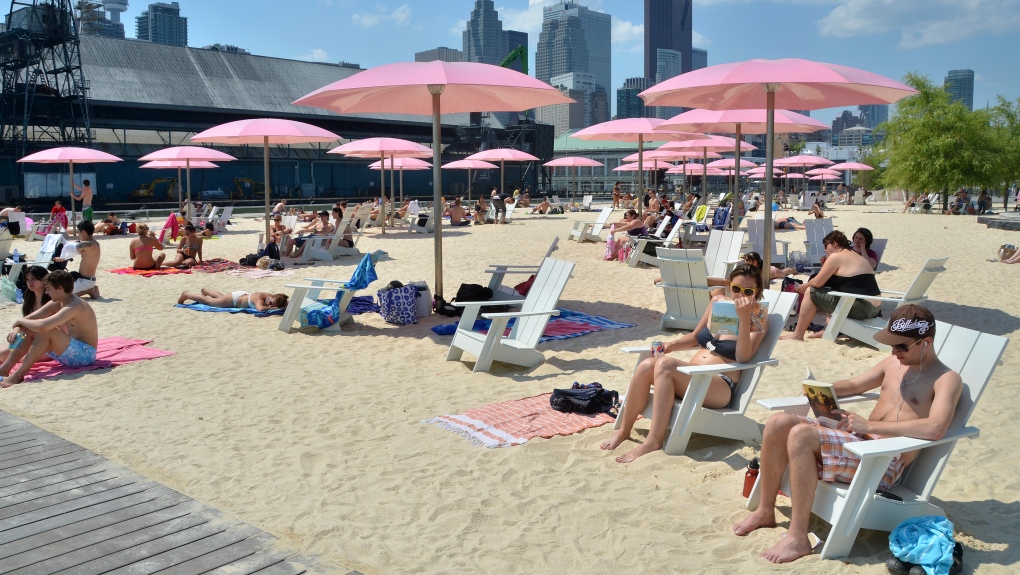 Sugar Beach in Toronto. (Source: Nicola Betts)
Sugar Beach in Toronto. (Source: Nicola Betts)
Montreal Mayor Valérie Plante said his death was "an immense loss," describing Cormier as "a visionary, a builder and a great Montrealer."
"His influence on the city's icons and public squares can be counted by the dozens: the Oval, Village Boules, Dorchester Square, Horloge Beach and more. His architectural work is a legacy that will live on in our memories forever," she wrote in a social media post on Friday.
"My sympathies to his family, loved ones and all those who mourn him today. Thank you for everything, Claude, and may you rest in peace."
Cormier grew up on a family farm run by his father, Laurent, in Princeville, Que., a town about 180 kilometres northeast of Montreal. His mother, Solange, was a teacher. In 2009, he received the Ordre National du Québec and has received more than 100 awards during his career as a landscape architect.
His last major projects were in the cities he loved most — Montreal and Toronto. The Ring, a massive, 30-metre-diameter steel loop, was inaugurated last year in Montreal's Place Ville Marie. Earlier this year, he unveiled a heart-shaped pond in Love Park in Toronto's downtown waterfront.
CANCER AFFLICTED HIS FAMILY
Cancer had struck the Cormier family particularly hard. The disease has taken the life of his sister at 53 in 2009, his father in 1976, and the lives of several aunts and uncles on his father's side.
About four years ago, Cormier was diagnosed with lung cancer, kidney cancer, as well as a rare form of lymphoma, according to his obituary.
The triple diagnosis led him to probe possible genetic origins of the rare condition he had. He later learned that several relatives on his father's side had been afflicted by Li-Fraumeni Syndrome.
Cormier is survived by his mother, sister, brother, nieces and nephew and several colleagues at CCxA.
CTVNews.ca Top Stories

Minister says dozens of firefighters from Alberta and B.C. to deploy in California
Emergency Preparedness Minister Harjit Sajjan says dozens of firefighters from Alberta and British Columbia will help fight wildfires in California, and the federal government is co-ordinating efforts with the provinces to deploy resources.
Alberta premier Danielle Smith meets with Trump at impromptu Mar-a-Lago visit
Alberta premier Danielle Smith met with President-elect Donald Trump Saturday at Mar-a-Lago in Florida.
Costco Canada accused of overcharging online shoppers in class-action lawsuit
Perrier Attorneys says Costco charged more for items online than in-store, a practice known as “double ticketing,” which is banned under the Competition Act.
Trudeau says Trump's comments on 51st state 'flattering' but a 'non-starter'
Prime Minister Justin Trudeau says talk of Canada becoming the 51st state is a distraction from more pressing threats of U.S tariffs on Canada and their likely impact.
Former PM Chretien says Liberal party must move back to 'radical centre'
As the Liberal party searches for a new leader, former prime minister Jean Chretien says it's time for the party to move back to the "radical centre" to help its electoral fortunes.
Are there U.S. military bases and American troops in Canada?
The U.S. military has more than 165,000 troops deployed in over 170 countries and territories, including Canada.
Teen's road test halted by stunt driving charge
A 17-year-old driver failed their road test before it even began after being stopped by police in a community safety zone.
Canada shuts out U.S. to win U-18 women's world championship
Marilou Grenier stopped 14 shots as Canada defeated the United States 3-0 on Sunday to capture the gold medal at the world women's under-18 hockey championship.
Why Canada and the U.S. are seeing a trend of wildfires in recent years
As Los Angeles continues to battle one of the most destructive wildfires in its history, experts say the devastation signals a troubling trend fuelled by a larger climate crisis.

































